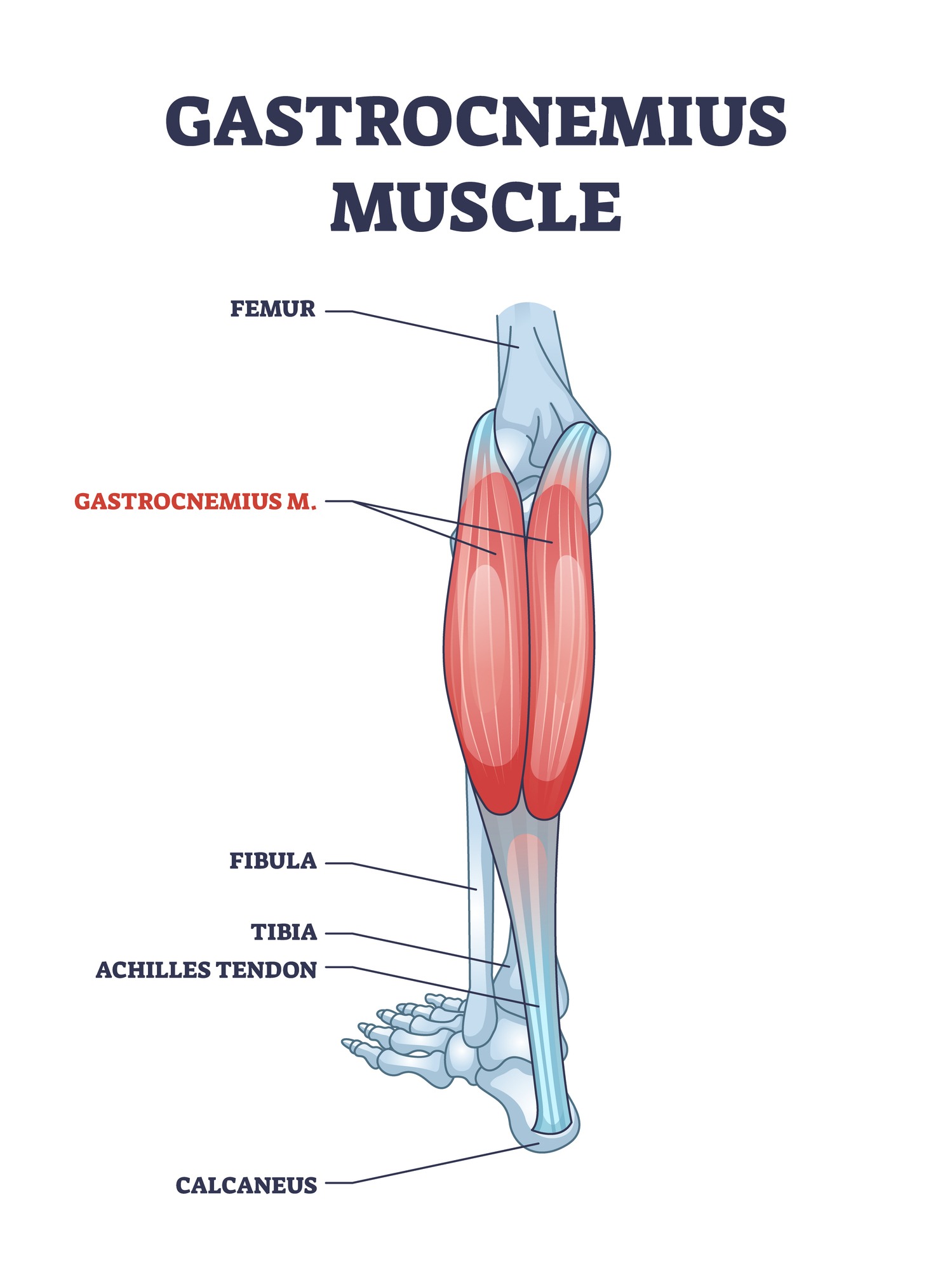Gastrocnemius Recession
Gastrocnemius recession, also known as gastrocnemius lengthening surgery or calf lengthening surgery, is a procedure used to correct conditions such as flatfoot, chronic Achilles tendonitis, plantar fasciitis, and toe walking. This surgery can also address forefoot pain, Morton’s neuroma, and bunions by lengthening the muscles and tendons at the back of the leg, allowing the heel to shift downward into a more natural position. This procedure is often performed as an alternative to Percutaneous Tendo-Achilles Lengthening, which can permanently weaken the Achilles tendon.

Types of Gastrocnemius Recession
Intramuscular Gastrocnemius Recession:
- A small incision is made in the calf muscle.
- The surgeon manually lengthens the gastrocnemius muscle.
- The muscle is detached from its attachment to the Achilles tendon and then lengthened by removing a segment or making lengthening incisions.
- The muscle is reattached to the Achilles tendon.
Endoscopic Gastrocnemius Recession:
- Small incisions are made in the calf muscle.
- An endoscope (a thin tube with a camera) and specialized instruments are used.
- The surgeon visualizes the inside of the calf muscle and detaches a portion of the gastrocnemius muscle from the Achilles tendon.
- The muscle is lengthened and reattached to the Achilles tendon.
Conditions Where Gastrocnemius Recession Is Needed
Preparing for Elbow Arthroscopy Surgery
Preparation for Surgery
Preparation for gastrocnemius recession involves:
- Preoperative Evaluation: Discussing medical history, medications, and allergies with the orthopedic surgeon.
- Fasting Instructions: Following dietary guidelines provided by the surgeon, typically involving fasting the night before surgery.
- Medication Adjustments: Temporarily stopping certain medications or supplements as advised by the surgeon to reduce bleeding risks and ensure safety.
The Procedure
Gastrocnemius recession is typically performed under general anesthesia with the patient positioned face down. The specific steps depend on whether the procedure is intramuscular or endoscopic.
Endoscopic Approach:
- A small incision is made, and an endoscope is inserted.
- The gastrocnemius muscle is visualized and partially detached.
- The muscle is lengthened and reattached.
Intramuscular Approach:
- An incision is made in the medial portion of the gastrocnemius muscle.
- The muscle is detached, lengthened, and reattached to the Achilles tendon.
Postoperative Care and Recovery
- Initial Recovery: The incision is closed and bandaged, and the patient may wear a postoperative shoe, walking boot, or splint.
- Physical Therapy: Begins two weeks post-surgery to rebuild calf strength and improve gait and balance.
- Healing Time: Generally takes six to eight weeks for the leg to heal, with complete recovery taking longer.
Risks and Complications
While gastrocnemius recession is generally safe, there are potential risks and complications, including:
- Infection
- Bleeding
- Blood clots
- Nerve or blood vessel injury
- Scarring
- Delayed wound healing
- Recurrence of the original condition
Conclusion
Gastrocnemius recession can provide significant relief for individuals suffering from calf muscle tightness and related foot and ankle conditions. By understanding the procedure, preparation, and recovery process, patients can make informed decisions and achieve the best possible outcomes. If you are experiencing pain in your foot or ankle due to tight calf muscles, consider consulting with a specialist to discuss whether gastrocnemius recession is the right option for you.
Find a Doctor
Hear What Our Patients Have to Say



Had my right hip replaced by Dr Jeffrey, and couldn't be happier with the job he did and the treatment I received. Been a few years and went in for a yearly checkup and everything is great! Great doctor and office staff!

My two partial knee replacements changed my life. I feel very respected and cared for at this practice. Everyone is very professional and explains things very conscientiously.

Dr. Acker is a very good listener and very [accommodating] to my requests. Very understand[ing] and puts my mind at ease for my upcoming knee replacement.

